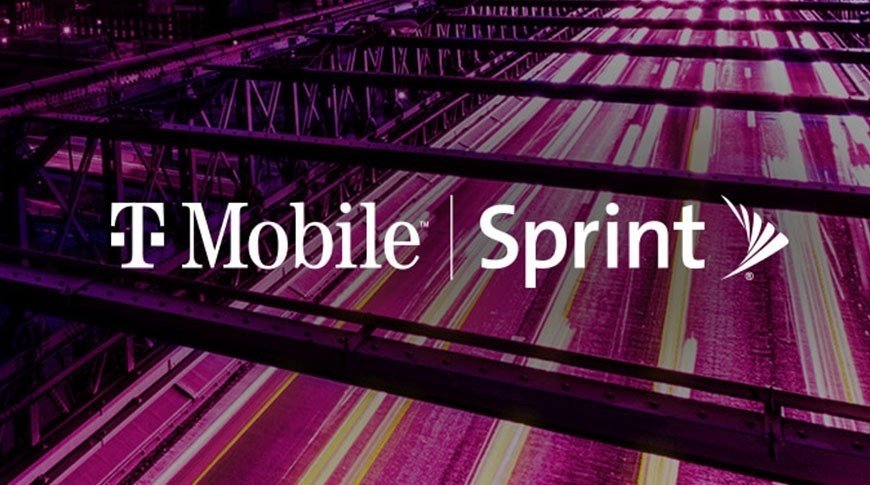T-Mobile will shut down Sprint's 3G network in March
T-Mobile on Friday delayed a planned shutdown of Sprint's CDMA network by three months as it gives partners more time to transition their customers to newer technology.

The nation's second-largest mobile carrier by subscribers previously anticipated to shut down Sprint's 3G network in January as it aggressively ramps to 5G. Towers and, more importantly, wireless spectrum gained from the wind-down process will be assigned to faster 4G and 5G networks.
T-Mobile's well-laid transition plans have been interrupted by unnamed partners who "haven't followed through on their responsibility to help their customers through this shift," the carrier said today.
Sprint's CDMA network was due to go offline on Jan. 1, 2022, but that date has been pushed back to March 31.
While T-Mobile fails to name names, CNET notes that Dish recently raised concerns about the timeline. The company previously said customers of its Boost Mobile subsidiary, which relies on Sprint's 3G network, could be impacted by the shutdown.
In August, T-Mobile said Dish was "dragging their feet" in transitioning its customers to 4G and 5G, adding that the firm had "not done nearly enough to upgrade its Boost CDMA customers."
The Sprint network shutdown is T-Mobile's next step in combining its assets following a $26 billion merger that was finalized in April 2020. Along with the 3G network, Sprint's LTE assets will be retired in June 2022.
T-Mobile's shift away from older cellular technologies mirrors efforts by industry rivals AT&T and Verizon, which plan to shutter their 3G networks in 2022 and 2023, respectively.
Read on AppleInsider

The nation's second-largest mobile carrier by subscribers previously anticipated to shut down Sprint's 3G network in January as it aggressively ramps to 5G. Towers and, more importantly, wireless spectrum gained from the wind-down process will be assigned to faster 4G and 5G networks.
T-Mobile's well-laid transition plans have been interrupted by unnamed partners who "haven't followed through on their responsibility to help their customers through this shift," the carrier said today.
Sprint's CDMA network was due to go offline on Jan. 1, 2022, but that date has been pushed back to March 31.
While T-Mobile fails to name names, CNET notes that Dish recently raised concerns about the timeline. The company previously said customers of its Boost Mobile subsidiary, which relies on Sprint's 3G network, could be impacted by the shutdown.
In August, T-Mobile said Dish was "dragging their feet" in transitioning its customers to 4G and 5G, adding that the firm had "not done nearly enough to upgrade its Boost CDMA customers."
The Sprint network shutdown is T-Mobile's next step in combining its assets following a $26 billion merger that was finalized in April 2020. Along with the 3G network, Sprint's LTE assets will be retired in June 2022.
T-Mobile's shift away from older cellular technologies mirrors efforts by industry rivals AT&T and Verizon, which plan to shutter their 3G networks in 2022 and 2023, respectively.
Read on AppleInsider

Comments
I travel around a lot and at first I considered switching back as the 5G was worse than AT&T LTE, the LTE was not as good as AT&Ts and there were still many places with no service. For a little cushion I activated the built in AT&T hotspot in my car for wi-fi calling backup on the road.
About 6 months later the network is very different. Rural areas and cities alike have solid service to include 5G. There are areas previously without signal on T-Mobile, AT&T and Verizon that now have T-Mobile 5G service - pretty remote areas.
The only area rough around the edges is the millimeter wave 5G which is still problematic. I was in Nashville near Vanderbilt Thursday and the millimeter wave was up and running but the network not well optimized - crazy fast signals outside and nothing inside a simple brick restaurant. It was like this in Memphis recently as the same tech was rolled out but was much improved within a month or so.
T-Mobile’s network is noticeably changing very fast.
Lower bands = lower bandwidth channels; higher frequency bands = huge bandwidth channels. Wider channels travel shorter distances; narrower channels can go further, generally speaking.
The addition of 700MHz for LTE and 600MHz for 5G to T-Mobile's portfolio mean they will benefit tremendously from the lower frequencies, but you won't get crazy fast on those bands at great distance (I would argue that anything over 100Mbps to a cell phone > 1 mile away is pretty cool).
Millimeter wave bands such as 28-47GHz, their Part 15 counterparts, 24GHz and 60GHz, and the lightly-licensed 70/80GHz E-band are amazing. I have deployed point-to-point links on 24-, 60-, and 70/80GHz, and they range in capacity from 1Gbps to 10Gbps.
But those frequencies don't propagate through most solids. The antennas have to have line of sight to each other. At anything over 18GHz, rain begins to cause problems. At 58-65GHz, oxygen absorbs the signal. Human bodies certainly have a blocking effect, and building walls most certainly will too.
The 5G spec has all kinds of redudnancy/resiliency/aggregation built in to allow the phone's radios to switch back and forth between bands, based on what's available.